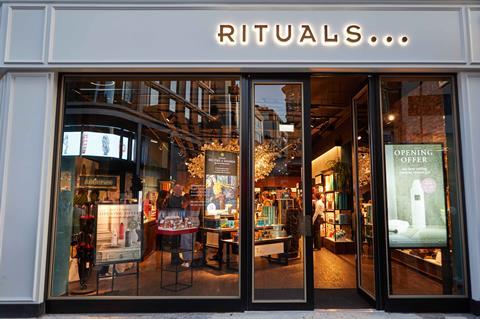Placing Ritual in Retail | Sacred Products with Integrity
What Happens When a Sacred Tool Is Put on a Shelf?

There’s a moment of hesitation many makers feel when preparing to sell ritual-based products.
A tool made in stillness — blessed with herbs, prayers, or ancestral knowledge — is now placed inside a box, labeled, priced, and set on a shelf between bath bombs and yoga leggings. It can feel like translation… or betrayal.
This tension is real: how can something sacred be sold without being flattened?
And yet, healing doesn’t happen only in temples. Spiritual care belongs in everyday life — and that means showing up, sometimes, in retail spaces.
This blog explores how to bring ritual-based offerings into commerce without compromising their soul — so that the altar and the aisle don’t stand in opposition, but in dialogue.
Why Ritual Products Deserve Retail Space (When Done Right)

Not everything sacred needs to remain hidden.
For many people, a candle made with prayer, a mist designed for emotional regulation, or an herbal bundle for clearing is their first touchpoint with ritual. It’s the gateway to remembering.
Placing sacred tools into accessible spaces:
-
Makes healing approachable
-
Brings intention into daily life
-
Supports people who don’t have access to teachers, elders, or community ritual
-
Allows makers to sustain their craft ethically
Ritual belongs where people already are — in homes, shops, and marketplaces. The key is not whether ritual tools are sold — but how they are offered.
The Difference Between Selling a Product and Offering a Practice
One of the most powerful shifts a vendor can make is from selling “just a thing” to offering a practice.
Consider the difference:
-
A candle with lavender and rose = a scented object
-
A candle with suggested intentions for grief, a lighting ritual, and a story = a sensory invitation to process emotion
The product becomes a bridge between someone’s current state and the space they long to enter.
To do this:
-
Frame the item with intention: “This oil is crafted for…” rather than “This smells like…”
-
Share simple practices: “Use during meditation” or “Burn on Fridays for release.”
-
Avoid grand claims and instead speak to energy, suggestion, and lived use
Ritual tools are more powerful when people know how to engage, not just consume.
Designing Products That Invite Ritual, Not Just Consumption

Packaging and product design matter — not because they need to be trendy, but because they can signal respect.
Some practical ways to preserve sacredness in presentation:
-
Include a printed ritual guide, poem, or intention card
-
Use recyclable or reusable materials to reflect mindfulness
-
Name ingredients with transparency and reverence (Latin botanical names, cultural context)
-
Design labels that leave space for mystery, not just marketing claims
For example: a cleansing mist made with mugwort might include a note about its use in dreamwork and ancestral rituals — rather than calling it “bad vibes spray.”
The design can whisper invitation, not instruction.
Avoiding Common Pitfalls: What Dilutes the Work

In the desire to be marketable, some vendors unintentionally distort their offerings. A few common missteps to be aware of:
-
Selling ritual tools without context
Items like white sage bundles, smudging feathers, or ancestral oils offered without explanation or sourcing can become hollowed-out symbols.
-
Blending cultural practices without clarity
Mixing Palo Santo, Buddhist chants, and chakras in a single bundle may confuse, rather than unify. Instead, clearly name lineages and inspiration.
-
Using sacred symbology for aesthetic
Sigils, deities, or ritual language printed for beauty but detached from practice can be seen as appropriative.
-
Over-promising in product descriptions
Avoid saying your product “heals trauma” or “cures depression.” Offer intention, not medical claims.
When in doubt, return to truth and traceability.
Creating Ethical Containers: The Checkout Is Not the End
Once a ritual tool is purchased, the real work begins. Vendors can extend care beyond the transaction in small but meaningful ways.
Ideas to support ongoing relationship:
-
Include QR codes to short instructional videos or meditations
-
Offer follow-up emails explaining how to deepen the product’s use
-
Host seasonal circles or virtual gatherings where people can share how they’ve used your tools
-
Create an education tab on your website explaining plant allies, ritual history, or cultural notes
This helps transform the product from an object into an invitation.
Final Note: Let the Sacred Travel, But With Boundaries
Ritual does not lose its power when it enters commerce.
It loses power when it’s removed from meaning.
A sacred object placed in a store — when done with reverence, education, and energetic clarity — becomes a seed. Someone will carry it home. Use it to begin again. Create their own altar. Light their own path.
The altar and the aisle are not at odds.
They just ask that the bridge between them be built with care, consent, and clarity.
So whether you’re creating for the shelf or the ceremony — offer the sacred with both hands.





